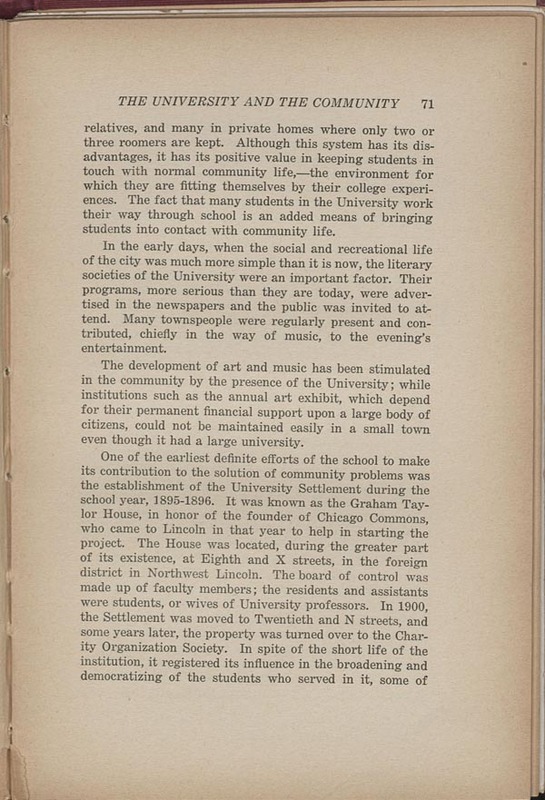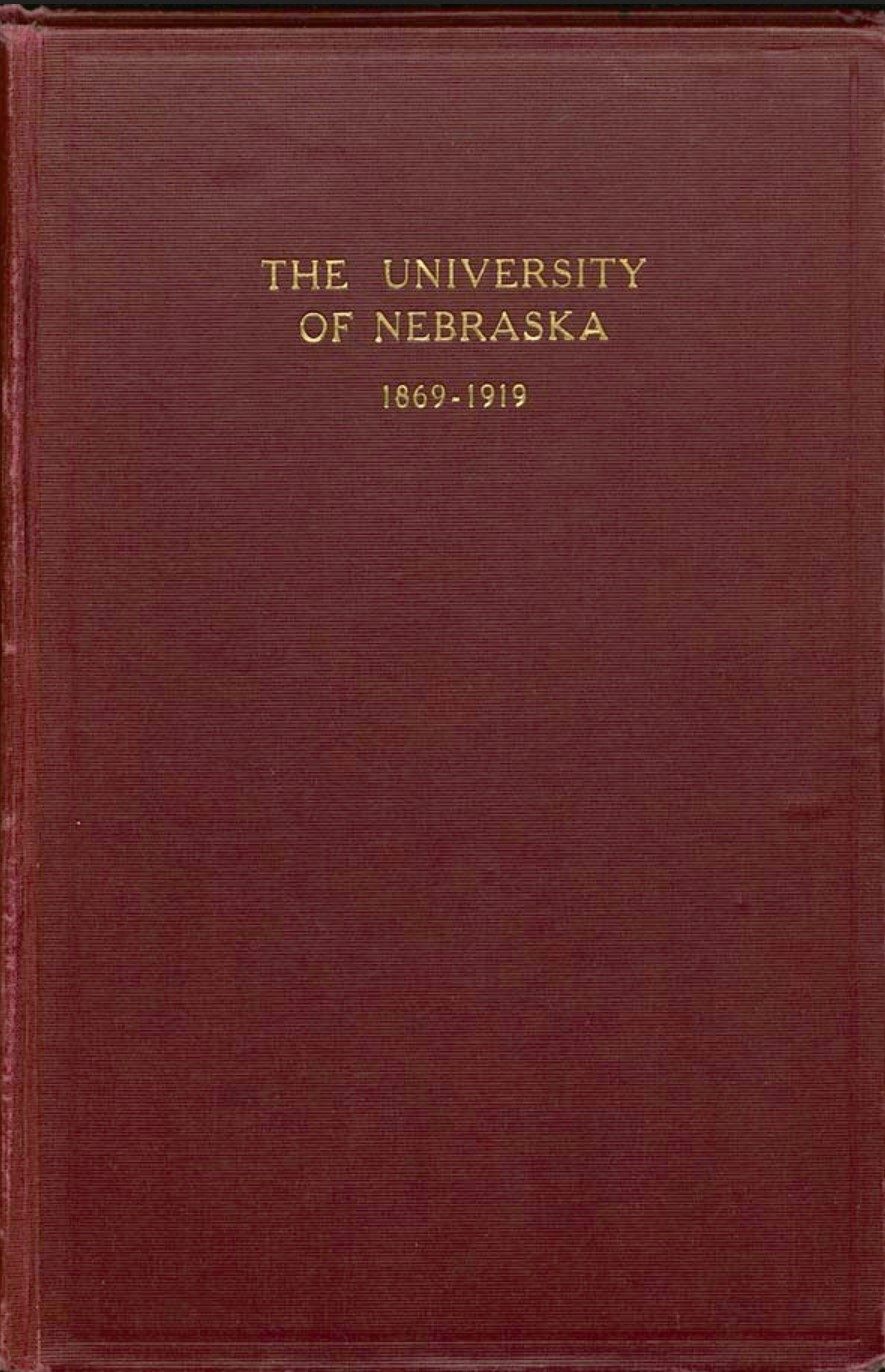075
Item
-
Title
-
075
-
Description
-
Semi-Centennial Anniversary Book: The University of Nebraska, 1869-1919
-
Transcription
-
relatives, and many in private homes where only two or three roomers are kept. Although this system has its disadvantages, it has its positive value in keeping students in touch with normal community life,—the environment for which they are fitting themselves by their college experiences. The fact that many students in the University work their way through school is an added means of bringing students into contact with community life.
In the early days, when the social and recreational life, of the city was much more simple than it is now, the literary societies of the University were an important factor. Their programs, more serious than they are today, were advertised in the newspapers and the public was invited to attend. Many townspeople were regularly present and contributed, chiefly in the way of music, to the evening's entertainment.
The development of art and music has been stimulated in the community by the presence of the University; while institutions such as the annual art exhibit, which depend for their permanent financial support upon a large body of citizens, could not be maintained easily in a small town even though it had a large university.
One of the earliest definite efforts of the school to make its contribution to the solution of community problems was the establishment of the University Settlement during the school year, 1895-1896. It was known as the Graham Taylor House, in honor of the founder of Chicago Commons, who came to Lincoln in that year to help in starting the project. The House was located, during the greater part of its existence, at Eighth and X streets, in the foreign district in Northwest Lincoln. The board of control was made up of faculty members; the residents and assistants were students, or wives of University professors. In 1900, the Settlement was moved to Twentieth and N streets, and some years later, the property, was turned over to the Charity Organization Society. In spite of the short life of the institution, it registered its influence in the broadening and democratizing of the students who served in it, some of
-
Rights
-
To inquire about usage, please contact Archives & Special Collections, University of Nebraska-Lincoln Libraries. These images are for educational use only. Not all images are available for publication.



